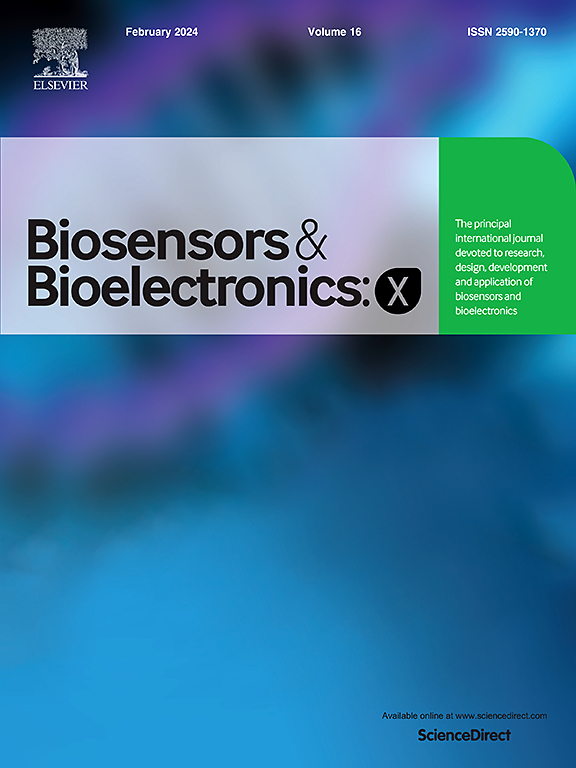Assessing the accuracy of human-inspired electronic skin: A systematic review
IF 10.61
Q3 Biochemistry, Genetics and Molecular Biology
引用次数: 0
Abstract
Electronic skin (e-skin) systems are devices that mimic the different sensing modalities of skin. While the modalities sensed can vary from temperature to tactile, the main inspiration for much of the research being conducted is mimicking the sensing modalities of human skin. Much research has been conducted on tactile sensing through e-skin, as interest grows in the use of e-skin with smart prosthetics and Virtual and Augmented Reality (VR/AR) applications. Being able to mimic the sophisticated ability for human hands to complete complex tasks of dexterity, using an e-skin as essential input system, is the goal of many research groups. In this systematic review, we provide a full overview on e-skin systems that focus on developing tactile sensing. The objective is to assess how accurately these systems mimic human skin tactile sensing modalities and how accurately the detected stimuli are sensed. The outcomes of the review show where the focus of the community is with regards to which modalities are being developed. Furthermore, information extracted from the papers that detail their quantitative accuracy in sensing these modalities is provided. With a total of 205 systems included insights on trends and a quantitative comparison of current e-skin systems are discussed. The limitations of the current methods applied and how they could be overcome are explored, in addition to highlighting the need for standardized experimental protocols to ensure e-skin systems can be assessed and compared more easily.
评估人体电子皮肤的准确性:一项系统综述
电子皮肤(e-skin)系统是模仿皮肤不同传感模式的设备。虽然感知的模式可以从温度到触觉变化,但许多正在进行的研究的主要灵感是模仿人类皮肤的感知模式。随着人们对电子皮肤与智能假肢以及虚拟和增强现实(VR/AR)应用的使用越来越感兴趣,通过电子皮肤进行触觉传感的研究已经进行了很多。利用电子皮肤作为基本的输入系统,能够模仿人类双手灵活完成复杂任务的复杂能力,是许多研究小组的目标。在这篇系统的综述中,我们提供了一个全面的概述,电子皮肤系统的重点是发展触觉传感。目的是评估这些系统模拟人类皮肤触觉感知模式的准确性,以及检测到的刺激被感知的准确性。审查的结果表明,社区的重点在哪里,正在制定哪些模式。此外,从论文中提取的信息详细说明了它们在感应这些模式时的定量准确性。共有205个系统包括趋势的见解和当前电子皮肤系统的定量比较进行了讨论。除了强调需要标准化的实验方案,以确保电子皮肤系统可以更容易地进行评估和比较之外,还探讨了当前应用方法的局限性以及如何克服它们。
本文章由计算机程序翻译,如有差异,请以英文原文为准。
求助全文
约1分钟内获得全文
求助全文
来源期刊

Biosensors and Bioelectronics: X
Biochemistry, Genetics and Molecular Biology-Biophysics
CiteScore
4.60
自引率
0.00%
发文量
166
审稿时长
54 days
期刊介绍:
Biosensors and Bioelectronics: X, an open-access companion journal of Biosensors and Bioelectronics, boasts a 2020 Impact Factor of 10.61 (Journal Citation Reports, Clarivate Analytics 2021). Offering authors the opportunity to share their innovative work freely and globally, Biosensors and Bioelectronics: X aims to be a timely and permanent source of information. The journal publishes original research papers, review articles, communications, editorial highlights, perspectives, opinions, and commentaries at the intersection of technological advancements and high-impact applications. Manuscripts submitted to Biosensors and Bioelectronics: X are assessed based on originality and innovation in technology development or applications, aligning with the journal's goal to cater to a broad audience interested in this dynamic field.
 求助内容:
求助内容: 应助结果提醒方式:
应助结果提醒方式:


